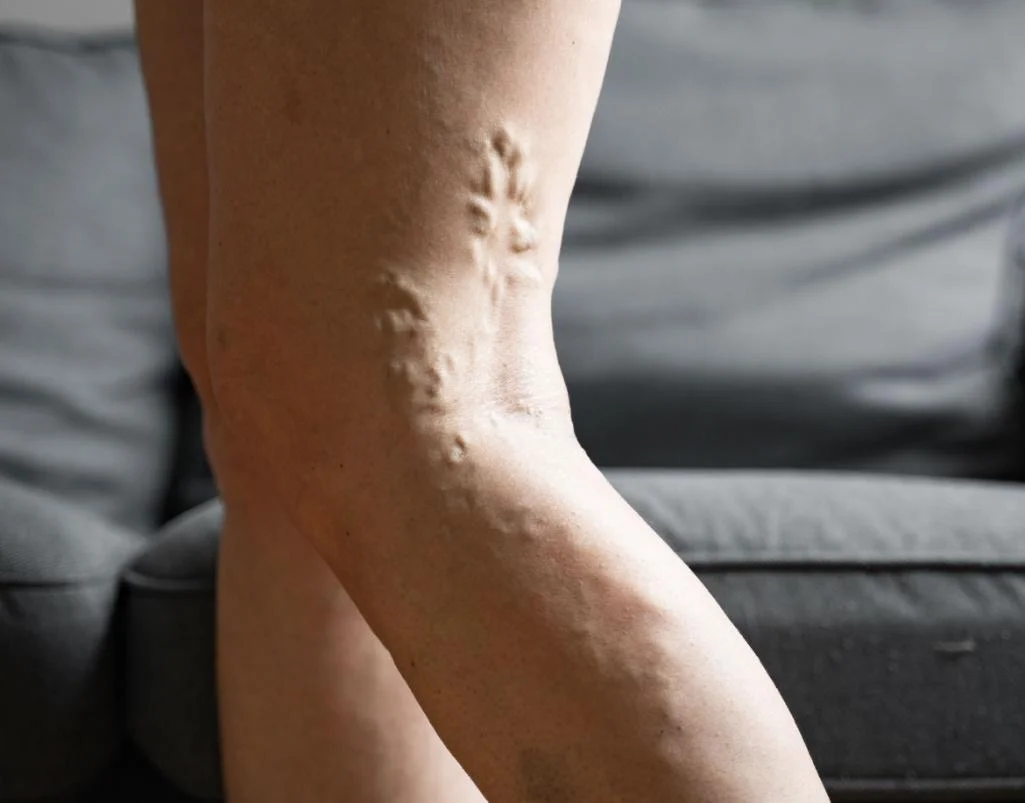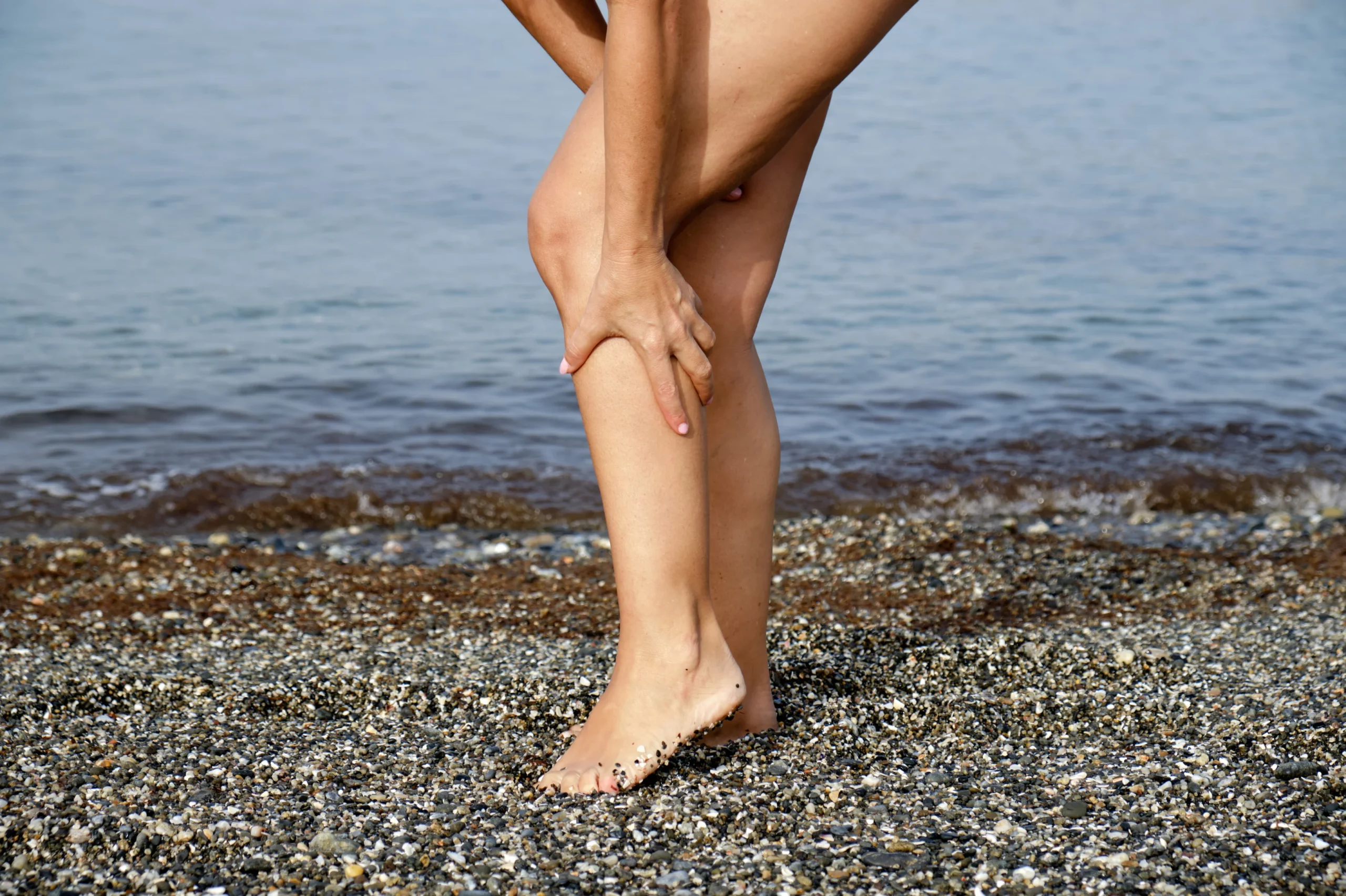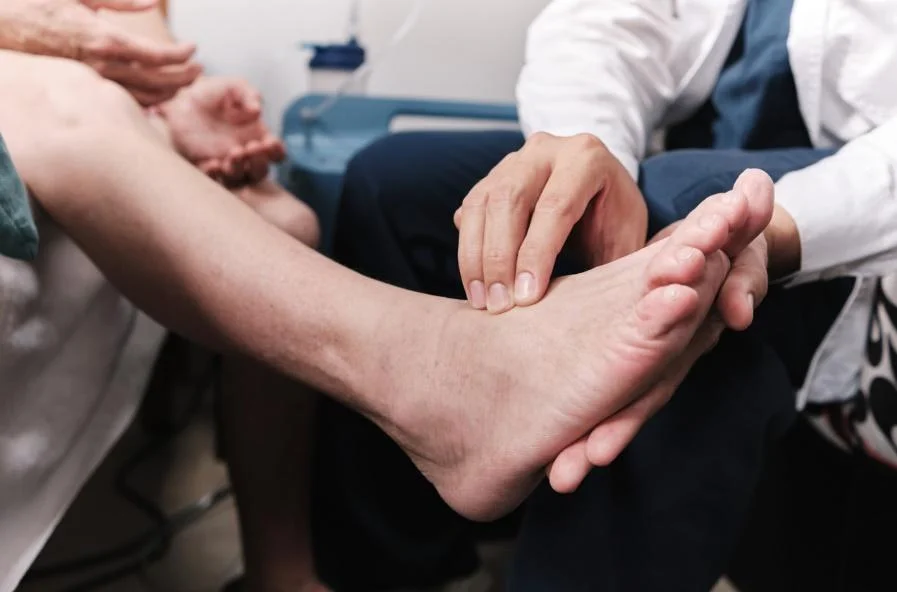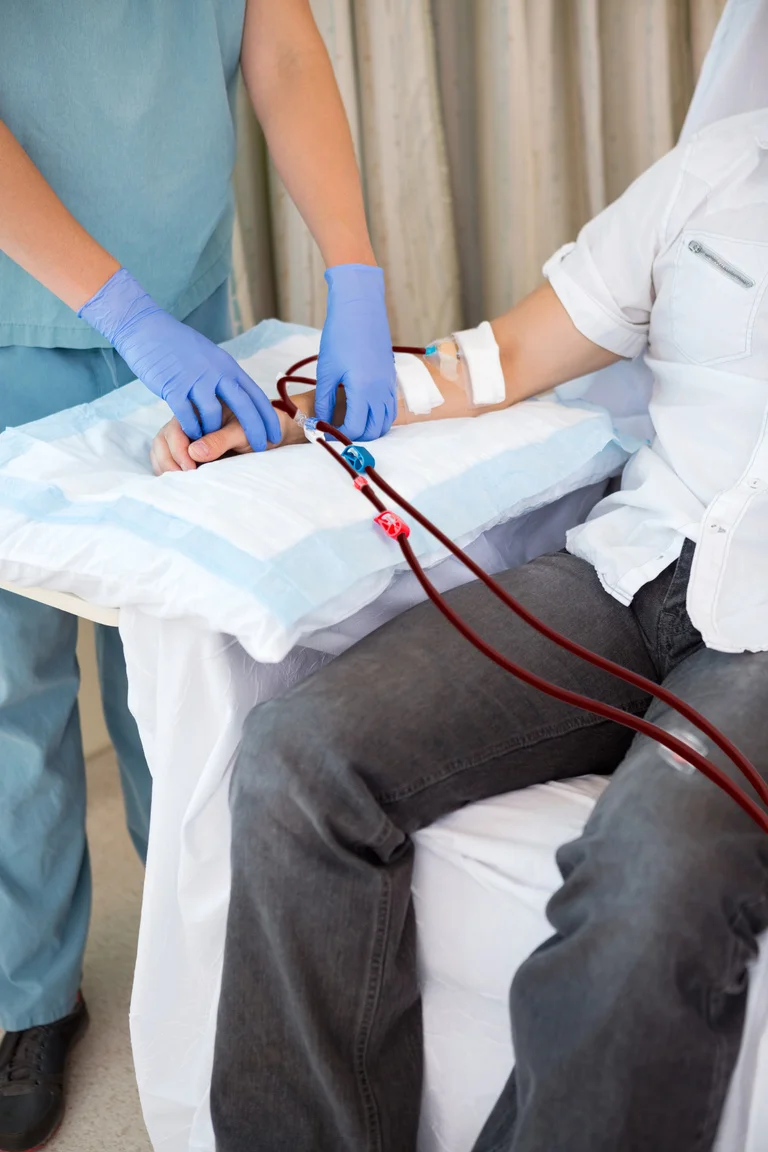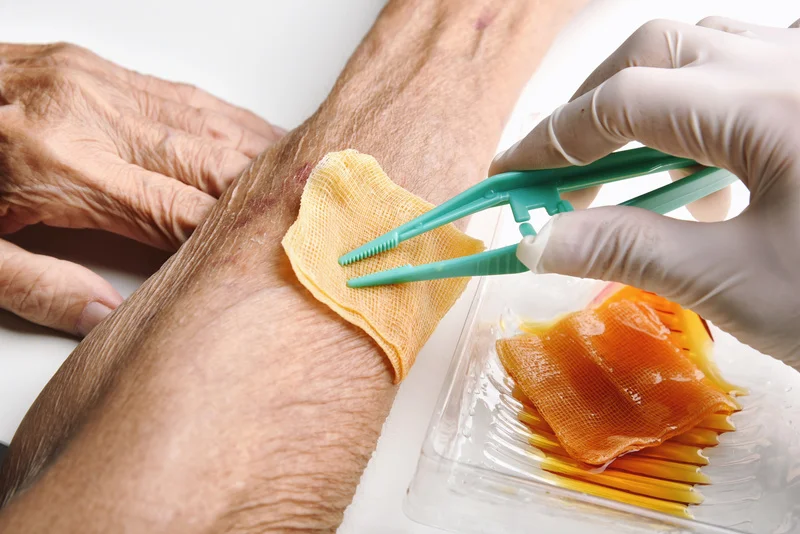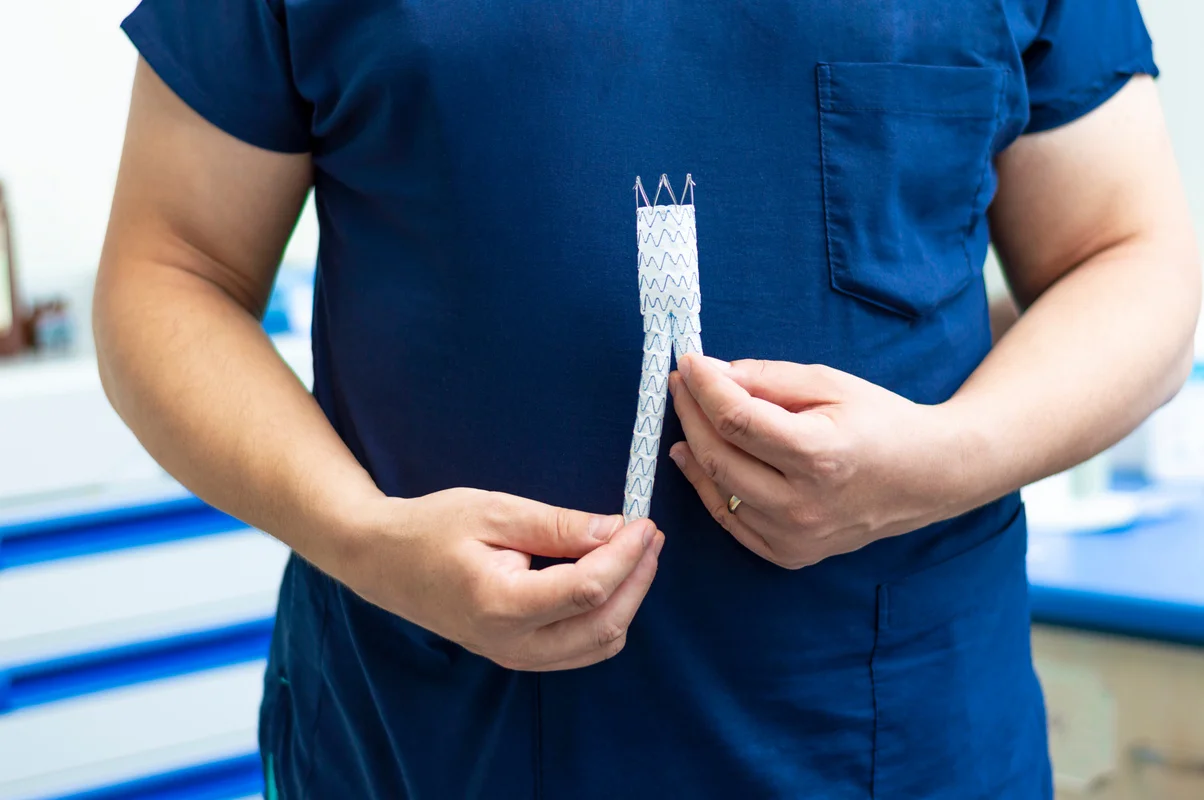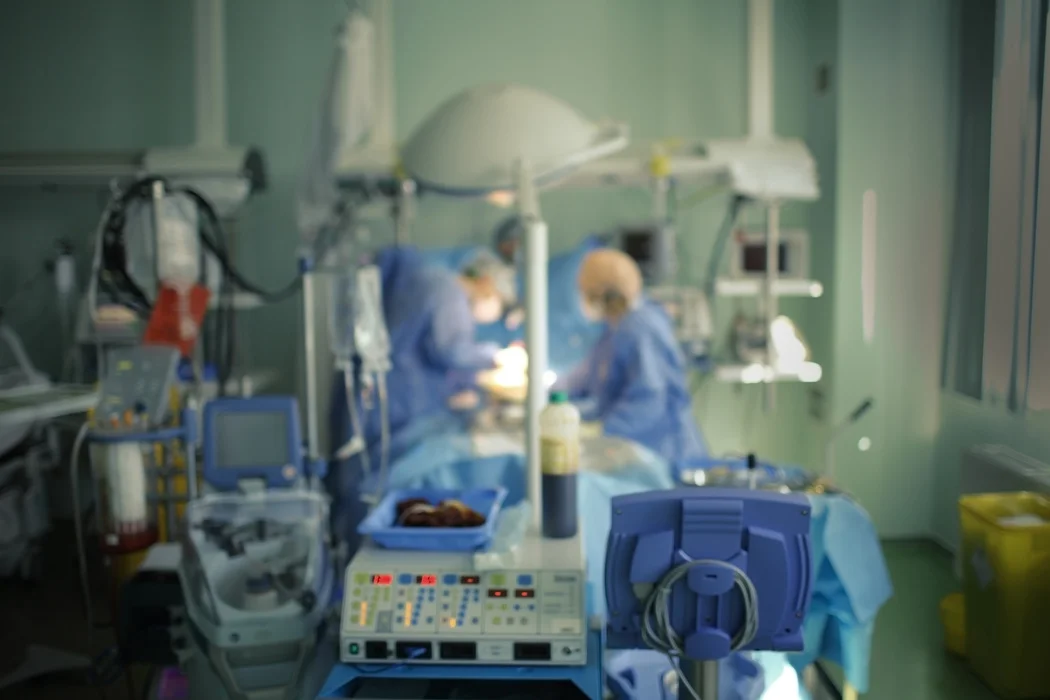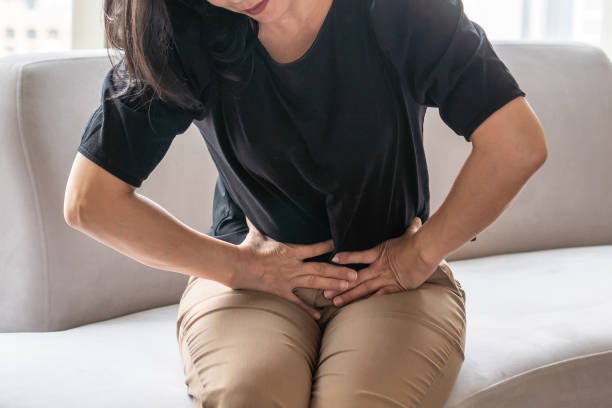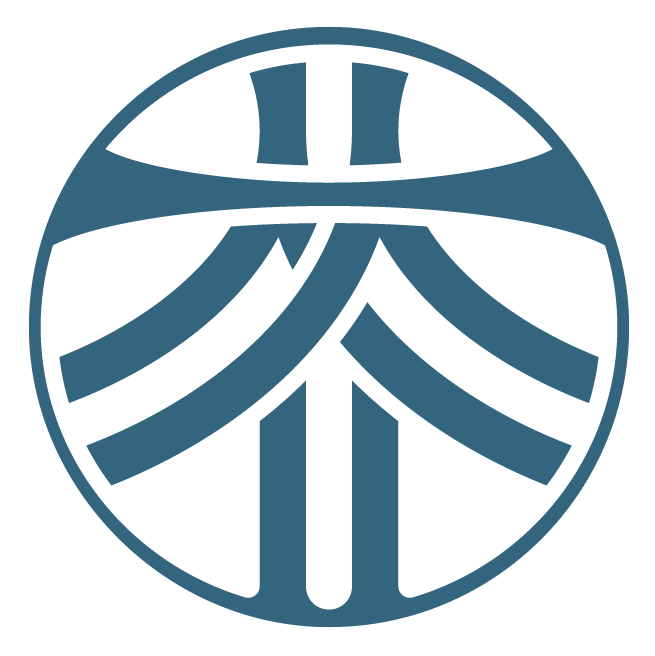What are Spider Veins?
Spider veins—medically called telangiectasia—are those fine, red-to-purple threads that fan out across the skin like little webs. They most often crop up on the calves, ankles and face. Because they sit so close to the surface, they rarely bulge the way varicose veins do, yet they can still hint at deeper venous reflux if larger trunks underneath are “leaky”. You can read more about that link on our Venous Reflux and Varicose Veins pages.

Why Do Spider Veins Happen?
Spider veins usually appear when genetics, hormones, and daily routine team up against your skin. If either parent had those fine thread-veins, your skin already has the blueprint. Add pregnancy, hormonal swings, or long spells on your feet – teachers, retail staff, hairdressers, office workers – and gravity stretches tiny surface vessels until they show.
Even without major venous reflux, local triggers such as exposure to Singapore’s strong sun or an old sports knock around the ankle can coax new webs to appear.
Sometimes, though, these veins are only the tip of the iceberg. When a deeper trunk vein can’t push blood back toward the heart, pressure backs up into the finer branches and those delicate patterns bloom. A venous duplex ultrasound scan can indicate to us whether the problem is purely cosmetic or begins deeper inside (ie “leaky veins” causing venous reflux), so you get appropriate right spider-vein treatment from the start.
Signs & Symptoms
Spider veins are usually more of an eye-sore than a health threat, but a few clues suggest they’re worth a closer look:
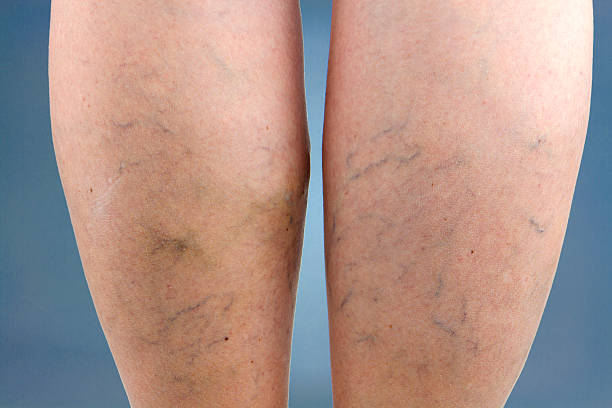
- Subtle sting or itch after long hours on your feet
- Evening ankle puffiness that settles overnight
- Patches that darken or creep outward over a few months
- Night-time calf cramps – especially if varicose veins are also present
If any of these crop up – or if those little spider vein webs simply knock your confidence in shorts-weather Singapore, perhaps it’s time to book an appointment for a vein check.
Getting the Full Picture
A face-to-face consult lets us judge the visible spider veins, but only a venous duplex ultrasound scan can evaluate what is happening underneath. This scan allows us to rule out underlying reflux or a small clot and decide whether treatment can stay purely cosmetic, or whether the underlying root cause needs to be fixed first. The imaging also doubles as the paperwork your insurer will ask for, so you’ll know exactly what’s covered before any work begins.
Treatment for Spider Veins
Most treatments below are walk-in, walk-out and performed in our clinic. We match the method to vein size, colour and any ultrasound findings:
| Approach | Best for | How it works & feels |
| Injection sclerotherapy | Most leg spider veins | A fine needle delivers a tiny dose of sclerosant; the vein collapses then gradually fades over time. Mild pin-prick. |
| VeinGogh® ohmic thermolysis | Very fine thread-veins or telangiectasia | A hair-thin probe releases a split-second burst of heat, sealing the vessel. Feels like a quick zap. |
| Laser therapy | Very fine thread-veins or rosacea-type veins | Light energy targets haemoglobin, shutting down tiny vessels without needles. Multiple short sessions. |
Most people need one to three sessions, spaced six to eight weeks apart, for optimal results.
If your ultrasound shows underlying venous reflux, we can close the leaking trunk at the same sitting using minimally invasive techniques like Radiofrequency Ablation (RFA) or ClariVein® and then tidy up the surface spider veins. By tackling the deeper leak and the surface webs in one go, you walk out with lighter legs – and results that last.
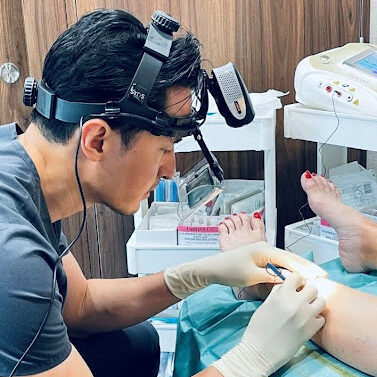
Cost & Insurance in Singapore
Because spider-vein work is considered cosmetic, it is not typically covered by most insurances. Expect S$800–1,200 per session. For optimal results, Dr Lim usually combines injection sclerotherapy with VeinGogh ohmic thermolysis in the same session.
If your duplex ultrasound scan shows significant reflux and you’re dealing with heaviness, swelling, or night-time calf cramps, fixing that leak moves from cosmetic to medical. At that point, most Integrated Shield Plans and Medisave can pick up a good share of the bill, easing the financial load.
What Recovery Looks Like
You’ll be on your feet the moment the session ends. For the first week or two, slip on compression stockings during the day, keep up gentle daily walks, and give hot yoga or saunas a two-week holiday. Expect a little bruising or faint brownish tracks along the treated lines – these fade within several weeks (occasionally a few months if your skin is very fair or prone to pigmentation). A good sunscreen speeds the process and wards off colour changes. If new spider veins crop up later, a touch up session might be necessary.
FAQ about Spider Veins
Varicose veins are enlarged, twisted veins that are visible under the surface of the skin. They often appear in the legs and can cause discomfort, pain, or swelling.
Spider veins are smaller, more superficial veins that often appear as blue, purple, or red lines on the skin surface. They are typically not painful but can be cosmetically bothersome to some individuals.
Several factors contribute to the development of varicose and spider veins, including age, genetics, hormonal changes, pregnancy, obesity, and prolonged periods of standing or sitting.
While spider veins are generally harmless, varicose veins can sometimes lead to complications such as bleeding, blood clots, and ulcers. It is advisable to consult with a healthcare provider for diagnosis and treatment options.
Approximately half of the population has some form of venous disease while varicose veins affect one out of two people age 50 and older, and 15-25% of all adults. On average 18% of men and 25% of women develop varicose veins. Varicose veins are one of the most common venous issues affecting the world today.
Anyone can develop spider or varicose veins, but they are more common in those above 50 years old, females, individuals with a family history, and those with certain lifestyle factors like a high BMI, desk-bound work environments, or in occupations which require you to stand for long periods of time.
Here are some physical symptoms of varicose veins that make them easier to diagnose:
- Itchy or flaky skin around the affected vein, sometimes accompanied by a burning sensation,
- Feeling of heaviness or ache in the lower legs after standing or sitting for long periods of time (usually worse at end of day, with comparative relief in the morning),
- Muscle cramps or pain in the lower legs, and,
- Swelling around the ankles – the ankle area appears puffy and swollen, and the ankle bone may not be visible
Not all of these symptoms are present in the same person. However, if you fit the above description, or if you have one or more of these symptoms, it is likely you have varicose veins. These symptoms can take a toll on your quality of life, making it hard to do things like walking or even standing for long periods.
Fortunately, modern minimally-invasive surgical methods have made the treatment of varicose veins quick and easy. Feel free to reach out for a personalised assessment and consultation should you have any of the above concerns.
While not all people present with severe symptoms, varicose veins generally worsen over time. Initially, slight heaviness and discomfort in the affected leg will be felt. If untreated, this pain may increase and result in limitations in walking and cramping during the night. Eventually, varicose veins can lead to skin discolouration or open wounds (ulcers) around the ankles.
Your healthcare provider will usually diagnose these conditions based on a physical examination. Additional tests like ultrasound may be recommended to assess the presence of venous incompetency (reflux), and rule out other issues.
An ultrasound is the most common diagnostic test for varicose veins. Some patients may require a CT (Computed Tomography) scan of your abdomen may be indicated to evaluate for compression of your pelvic veins.
Treatment options may include lifestyle changes, compression stockings, minimally invasive procedures like sclerotherapy, radiofrequency ablation therapy, and surgical interventions like vein stripping.
Generally, spider veins are treated with less invasive methods like injection sclerotherapy or radiofrequency treatment. Spider veins usually require a few sessions of sclerotherapy to resolve.
Varicose veins may additionally require more extensive treatment like mini-stab avulsions (for removal) depending on their extent and severity.
Coverage varies by insurance provider and plan. It is essential to consult your insurance to determine what treatments are covered, especially since some treatments may be considered cosmetic.
Clinical results have been published documenting the success of Endovenous Radiofrequency Ablation, ClariVein and VenaSeal at above 90% and Sclerotherapy between 60-80%.
As with any medical treatment, each method has its own risks and benefits. Your surgeon will explore the most suitable treatment option, after a thorough assessment of your condition.
Sclerotherapy is commonly used to treat spider veins (small superficial veins) and has been used with safety and success since the 1930’s. This treatment is a non-surgical procedure, and can be performed in the outpatient clinic.
Using a very fine needle, a solution is injected into the vein. This solution causes the vein walls to stick together and eventually close. The obliterated vein is absorbed by the body over time.
Following sclerotherapy, there is very little to no downtime. Patients will be required to wear a compression stocking for the next week. They can return to work or carry on with normal activities straight away. Some patients may experience gentle bruising at the treated area, especially those with thin and lighter skin.
Patients should wait at least three months after pregnancy before being treated for venous insufficiency. Patients who have suppressed immune systems, deep vein thrombosis, and patients who are immobile (ie cannot walk or move around), are generally not good candidates for treatment and will require further evaluation to assess their suitability.
Recovery depends on the treatment method used. Minimally invasive treatments usually have shorter recovery times. Most patients will be able to walk on the same day after their surgery. Traditional open surgical treatments (eg open stripping of vein) may require a longer period for full recovery.
Yes. There is a possibility that new varicose or spider veins may develop over time even after successful treatment, particularly if underlying risk factors are not addressed. Risk of recurrence is usually around 5-10%.
This depends on the type of treatment you undergo. For minimally invasive treatments, most people can return to normal activities relatively quickly in a day or two. Vigorous exercise is usually not recommended till 2 weeks post-surgery. Traditional open surgical treatments may require a longer period for full recovery.
Most treatments aim to reduce the appearance and symptoms of varicose and spider veins significantly, but results can vary from person to person.
While many people seek treatment for cosmetic reasons, treatment can also alleviate symptoms like pain, swelling, and itching associated with varicose veins.
You can schedule a consultation by:
- Calling our clinic at +(65) 6694-2282,
- Leaving us a Whatsapp message +(65) 9727-0788,
- Emailing contact@drdarryllim.com, or
- Using our contact form [go to contact page]
During your first consultation, your vascular surgeon will examine your veins, discuss your symptoms, go over your medical history, and possibly recommend additional tests. A personalized treatment plan will then be discussed.
Spider veins are usually caused by weak or damaged valves in small veins, leading to blood pooling near the skin’s surface. Factors like genetics, ageing, hormonal changes, pregnancy, or standing for long periods can increase the risk.
Spider veins don’t go away on their own. While lifestyle changes may reduce the risk of new ones forming, existing veins typically need treatments like sclerotherapy or VeinGogh to fade or disappear.
Unhealthy veins may appear as bulging, twisted varicose veins or fine, web-like spider veins. They can look blue, purple, or red and often show up on the legs. Other signs include swelling, skin discolouration, or visible veins that worsen when standing.
Spider veins aren’t usually a sign of poor health. They’re often cosmetic and caused by factors like genetics, hormones, or standing too long. However, if you have symptoms like aching or swelling, they could suggest underlying vein issues worth checking.
Natural methods like exercise, leg elevation, and compression stockings may ease symptoms and prevent new spider veins. However, they won’t remove existing ones. Treatments like sclerotherapy or VeinGogh are typically needed for visible results.
Spider veins can start appearing as early as your 20s or 30s, especially if you have a family history or certain risk factors like pregnancy, hormonal changes, or standing for long hours. They tend to become more common with age.
Exercise won’t make spider veins go away, but it can improve circulation and reduce symptoms like leg fatigue or swelling. Staying active may help prevent new veins from forming, but existing ones usually need treatments like sclerotherapy to fade.
The most effective treatment for spider veins is sclerotherapy, where a solution is injected to collapse the vein. VeinGogh is another good option for smaller veins. Both are minimally invasive and provide reliable cosmetic improvement.
Varicose veins are not considered a serious medical condition. But, they can be uncomfortable and can lead to more serious problems. And, because they may be very noticeable, they may cause people to feel uncomfortable or embarrassed.
While no drink can cure varicose veins, staying hydrated helps circulation. Drinks rich in antioxidants- like lemon water, green tea, or beetroot juice- may support vein health. Medical treatments are still needed to effectively treat existing varicose veins.
